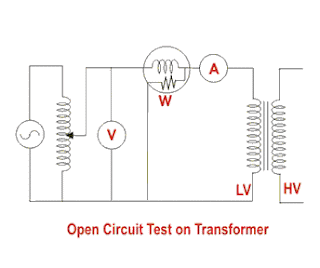Energy Meter Testing
We cannot think of life without electricity and when there is electricity consumption there is a need to measure its consumption. Here energy meter comes into picture. In every residence, malls, industry, everywhere energy meters are used to measure the electrical energy consumed. Those consumers which consume large energy needs better technology to manage their energy consumption and need more data to improve their services. Improvement in energy meter technology has increased the value-added features such as remote sensing, LCD display, recording of tempering events, and many more quality monitoring features in it, along with compactness of size. But it has raised the problem of electromagnetic interference which affects the performance of the equipment. So for better reliability, energy meters have to pass through various electromagnetic compatibility (EMC) tests where meters are compared under various normal and abnormal conditions with a laboratory to ensure its accuracy in the field.
Standard Tests for Energy Meters
The performance tests of an energy meter as per IEC standards are divided mainly in three segments which include its mechanical aspects, electrical circuiting, and climatic conditions.
- Mechanical component tests.
- Climatic conditions test include those limits which influence the performance of the meter externally.
- Electrical requirements covered many tests before giving accuracy certificate. Under this segment, energy meter is tested for:
- Heating effect
- Proper insulation
- Supply of voltage
- Protection to earth fault
- Electromagnetic compatibility
Electromagnetic Compatibility Test
An electromagnetic compatible test is the most important test which finally ensures the accuracy of the energy meter. This test is fragmented in two parts- one is Emission tests, and the other is Immunity test. The electromagnetic interference problem is very common today.
Those circuits in use today, can emit electromagnetic energy which can affect the performance and reliability of both its inner circuitry and the nearby equipment. EMI can travel through conduction or by radiation. When EMI goes through the wire or through cables, it is called conduction. When it travels through free space, it is called radiation.
Those circuits in use today, can emit electromagnetic energy which can affect the performance and reliability of both its inner circuitry and the nearby equipment. EMI can travel through conduction or by radiation. When EMI goes through the wire or through cables, it is called conduction. When it travels through free space, it is called radiation.
Emission Test
In an electronic system, there are many components like switching elements, chokes, circuit layout, rectifying diodes and much more which produce EMI. This test ensures that the energy meter does not affect the performance of the nearby instruments or we can say that it ensures that it does not conduct or radiate EMI beyond a definite limit. There are two types of emission test based on the EMI escapes from the system.
Conducted emission test-
In this test, power lead and cables are checked to measure the EMI escape, and it covers small meter of the frequency range from 150 kHz to 30 MHz.
Radiated emission test-
This test measures the EMI escape through free space, and it covers large meters of the frequency range from 31 MHz to 1000MHz.
Conducted emission test-
In this test, power lead and cables are checked to measure the EMI escape, and it covers small meter of the frequency range from 150 kHz to 30 MHz.
Radiated emission test-
This test measures the EMI escape through free space, and it covers large meters of the frequency range from 31 MHz to 1000MHz.
Immunity Test
The emission test ensures that meter does not work as the source for EMI for other nearby equipment; similarly immunity test ensures that meter does not work as a receptor and properly function in the presence of EMI. Again, immunity tests are of two types based on radiation and conduction.
Conducted immunity test-
These tests ensure that meter’s functioning do not get disturbed if it is in the blanket of EMI. The electromagnetic interference source either in contact through data, interface lines, power lines, or by contact.
Radiated immunity test-
During this test, meter functioning is monitored and if it gets affected by EMI present in the surrounding area, that fault is recognized and corrected their only. It also is known as the electromagnetic high-frequency field test. Radiations generated by sources like small handheld radio transceivers, transmitters, switches, welders, fluorescent lights, switches, operating inductive loads etc.
Conducted immunity test-
These tests ensure that meter’s functioning do not get disturbed if it is in the blanket of EMI. The electromagnetic interference source either in contact through data, interface lines, power lines, or by contact.
Radiated immunity test-
During this test, meter functioning is monitored and if it gets affected by EMI present in the surrounding area, that fault is recognized and corrected their only. It also is known as the electromagnetic high-frequency field test. Radiations generated by sources like small handheld radio transceivers, transmitters, switches, welders, fluorescent lights, switches, operating inductive loads etc.








No comments:
Post a Comment